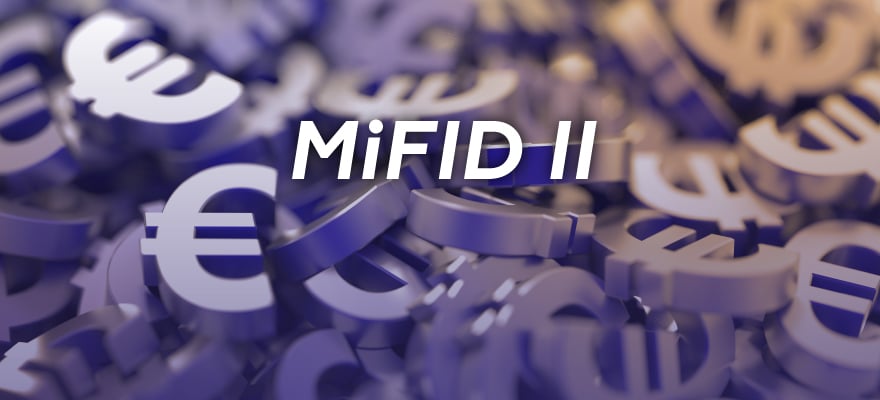90% of Buy-Side Firms at Risk of Missing MiFID II Deadline
- With less than six months to go to MiFID II, the vast majority of the buy-side is worrying about looming deadlines.

The upcoming implementation of MiFID II this January is expected to yield widespread changes for financial venues and the broader regulatory playing field. Despite being postponed, the sweeping Regulation Regulation Like any other industry with a high net worth, the financial services industry is tightly regulated to help curb illicit behavior and manipulation. Each asset class has its own set of protocols put in place to combat their respective forms of abuse.In the foreign exchange space, regulation is assumed by authorities in multiple jurisdictions, though ultimately lacking a binding international order. Who are the Industry’s Leading Regulators?Regulators such as the UK’s Financial Conduct Authority ( Like any other industry with a high net worth, the financial services industry is tightly regulated to help curb illicit behavior and manipulation. Each asset class has its own set of protocols put in place to combat their respective forms of abuse.In the foreign exchange space, regulation is assumed by authorities in multiple jurisdictions, though ultimately lacking a binding international order. Who are the Industry’s Leading Regulators?Regulators such as the UK’s Financial Conduct Authority ( Read this Term may still prove to be premature for Buy-Side Buy-Side The buy-side is comprised of firms in the financial industry that purchase securities and are accompanied by account investment managers, pension funds, and hedge funds.The buy-side is composed of those that buy and invest large sums of securities with the intention of generating a lucrative return or have their funds managed. The Buy-Side ExplainedIn terms of Wall Street, the buy-side includes investment institutions that purchase securities, stocks, or other financial instruments with the aim The buy-side is comprised of firms in the financial industry that purchase securities and are accompanied by account investment managers, pension funds, and hedge funds.The buy-side is composed of those that buy and invest large sums of securities with the intention of generating a lucrative return or have their funds managed. The Buy-Side ExplainedIn terms of Wall Street, the buy-side includes investment institutions that purchase securities, stocks, or other financial instruments with the aim Read this Term firms, with nearly 90 percent believing that they are at high or medium risk of not being compliant by the January 3 deadline.
The London Summit 2017 is coming, get involved!
The road to MiFID II was never expected to be easy, however the percentage of buy-side firms expressing concern is staggeringly high with less than six months to go before the deadline. Indeed, the European Securities and Markets Authority (ESMA) has taken every opportunity to alert, provide guidance, and instil clarity surrounding the measures, which have been in the making for well over a year.
Too soon?
MiFID II will bring myriad changes to reporting and transaction obligations, along with curtailing other practices. A recent survey conducted by JWG analyzed the buy-side and its overall readiness for the regulations’ passage, and found a general level of unpreparedness from around the industry. It is not unexpected for most firms to show a general level of reticence towards a regulatory shift of this magnitude, but nearly 90 percent of firms displaying compliance risks could be problematic.
While MiFID II will help promote a more transparent and cohesive marketplace, the latest survey results follow another negative report which framed the regulations as a potentially double-edged sword. Earlier this month, a McKinsey & Co. study portended a contraction in the research spending industry at banks by nearly 30 percent. New regulations will force lenders to disclose their research spending, which could lead to a consolidation of analyst pools and the entire space.
Information gap
The JWG survey also touched on the general understanding of MiFID II regulations, and again unearthed some potentially problematic signs. For example, nearly 45 percent of buy-side respondents still did not know how exactly the obligations would affect their firm. A high proportion of these have also not effected an implementation program, which places them at higher risk of not being compliant by the deadline.
Of further note, the 10 percent of respondents that classified themselves at low risk of not meeting the deadline are also those that utilize the smallest budget, suggesting that these institutions have not yet understood the impact of the MiFID II regulation.
Meanwhile, the actual path towards compliance has been highly stratified – while the survey results show an uptick in smart technological methods of managing requirements, nearly 66 percent continue to rely on manual, resource intensive, and ultimately ineffective routes to compliance.

PJ Di Giammarino
PJ Di Giammarino, CEO of JWG, commented: “With only a few thousand hours to implementation, it is very troubling that the buy-side does not see itself compliant with MiFID II. With small teams and a DIY approach it would appear many are missing the benefit of collaborative efforts and third party solutions. A common view of the 1.4 million paragraphs of MiFID II is critical for firms on the buy-side to avoid harsh penalties from the regulator and lose out to their competition next year.”
The upcoming implementation of MiFID II this January is expected to yield widespread changes for financial venues and the broader regulatory playing field. Despite being postponed, the sweeping Regulation Regulation Like any other industry with a high net worth, the financial services industry is tightly regulated to help curb illicit behavior and manipulation. Each asset class has its own set of protocols put in place to combat their respective forms of abuse.In the foreign exchange space, regulation is assumed by authorities in multiple jurisdictions, though ultimately lacking a binding international order. Who are the Industry’s Leading Regulators?Regulators such as the UK’s Financial Conduct Authority ( Like any other industry with a high net worth, the financial services industry is tightly regulated to help curb illicit behavior and manipulation. Each asset class has its own set of protocols put in place to combat their respective forms of abuse.In the foreign exchange space, regulation is assumed by authorities in multiple jurisdictions, though ultimately lacking a binding international order. Who are the Industry’s Leading Regulators?Regulators such as the UK’s Financial Conduct Authority ( Read this Term may still prove to be premature for Buy-Side Buy-Side The buy-side is comprised of firms in the financial industry that purchase securities and are accompanied by account investment managers, pension funds, and hedge funds.The buy-side is composed of those that buy and invest large sums of securities with the intention of generating a lucrative return or have their funds managed. The Buy-Side ExplainedIn terms of Wall Street, the buy-side includes investment institutions that purchase securities, stocks, or other financial instruments with the aim The buy-side is comprised of firms in the financial industry that purchase securities and are accompanied by account investment managers, pension funds, and hedge funds.The buy-side is composed of those that buy and invest large sums of securities with the intention of generating a lucrative return or have their funds managed. The Buy-Side ExplainedIn terms of Wall Street, the buy-side includes investment institutions that purchase securities, stocks, or other financial instruments with the aim Read this Term firms, with nearly 90 percent believing that they are at high or medium risk of not being compliant by the January 3 deadline.
The London Summit 2017 is coming, get involved!
The road to MiFID II was never expected to be easy, however the percentage of buy-side firms expressing concern is staggeringly high with less than six months to go before the deadline. Indeed, the European Securities and Markets Authority (ESMA) has taken every opportunity to alert, provide guidance, and instil clarity surrounding the measures, which have been in the making for well over a year.
Too soon?
MiFID II will bring myriad changes to reporting and transaction obligations, along with curtailing other practices. A recent survey conducted by JWG analyzed the buy-side and its overall readiness for the regulations’ passage, and found a general level of unpreparedness from around the industry. It is not unexpected for most firms to show a general level of reticence towards a regulatory shift of this magnitude, but nearly 90 percent of firms displaying compliance risks could be problematic.
While MiFID II will help promote a more transparent and cohesive marketplace, the latest survey results follow another negative report which framed the regulations as a potentially double-edged sword. Earlier this month, a McKinsey & Co. study portended a contraction in the research spending industry at banks by nearly 30 percent. New regulations will force lenders to disclose their research spending, which could lead to a consolidation of analyst pools and the entire space.
Information gap
The JWG survey also touched on the general understanding of MiFID II regulations, and again unearthed some potentially problematic signs. For example, nearly 45 percent of buy-side respondents still did not know how exactly the obligations would affect their firm. A high proportion of these have also not effected an implementation program, which places them at higher risk of not being compliant by the deadline.
Of further note, the 10 percent of respondents that classified themselves at low risk of not meeting the deadline are also those that utilize the smallest budget, suggesting that these institutions have not yet understood the impact of the MiFID II regulation.
Meanwhile, the actual path towards compliance has been highly stratified – while the survey results show an uptick in smart technological methods of managing requirements, nearly 66 percent continue to rely on manual, resource intensive, and ultimately ineffective routes to compliance.

PJ Di Giammarino
PJ Di Giammarino, CEO of JWG, commented: “With only a few thousand hours to implementation, it is very troubling that the buy-side does not see itself compliant with MiFID II. With small teams and a DIY approach it would appear many are missing the benefit of collaborative efforts and third party solutions. A common view of the 1.4 million paragraphs of MiFID II is critical for firms on the buy-side to avoid harsh penalties from the regulator and lose out to their competition next year.”
